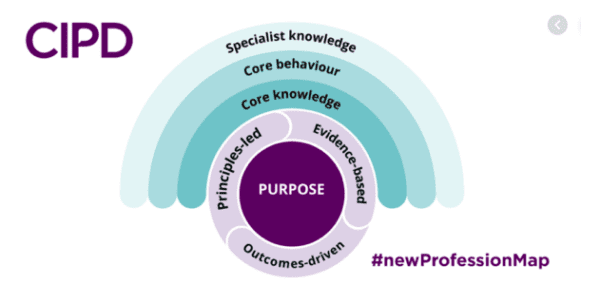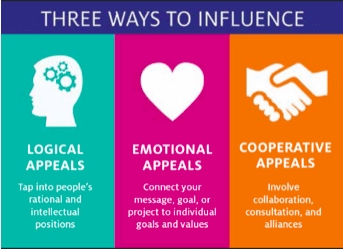Developing Professional Practice
The below is a module 4 submission for the CIPD Level 5 certification, kindly shared by one of our clients to help you on your own HR journey. Next is, Developing Professional Practice.
Contents
Part One – Understand what is required to be an effective and efficient HR professional
1.1 Evaluate what it means to be an HR professional with reference to the CIPD’s most current Profession Map
1.2 Describe the elements of group dynamics and conflict resolution methods
Part Two – Be able to perform efficiently and effectively as an HR professional Apply project management techniques
2.1 Apply problem-solving techniques
2.2 Apply a range of methods for influencing, persuading and negotiating with others
Part Three – Be able to apply CPD techniques to construct, implement and review a personal development plan
3.1 Undertake a self-assessment of HR professional practice capabilities to identify continuing professional development needs Separate upload
3.2 Produce a plan to meet personal development objectives based on an evaluation of different options
3.3 Reflect on performance against the plan, identify learning points for the future and revise the plan accordingly
7 Other Submissions
Check out the other 7 module submissions here:
- Module #1 Improving Organisational Performance
- Module #2 Contemporary Developments in Employment Relations
- Module #3 Employment Law
- Module #5 Business Issues and The Contexts of Human Resources
- Module #6 Using Information in Human Resources
- Module #7 Employee Engagement
- Module #8 Managing and Co-ordinating the Human Resources Function
Part One – Understand What is Required to be an Effective and Efficient HR Professional
1.1 Professional Practice – Evaluate What it Means to be an HR Professional With Reference to the CIPD’s Most Current Profession Map
HR Professionals can be all-rounders, also known as a generalist or specialise in a particular field such as Payroll, Benefits, Recruitment or Learning and Development. From my experience, most HR professionals start their career as a generalist to gain a good all round knowledge of how a business works and then move into their preferred area of practice. The CIPD have found through studies and reports that “HR Practitioners have a slightly stronger sense of identification with the organisation than with the profession” (Baczor and Zheltoukhove, 2017)
HR professionals have many tools that help them create and maintain a healthy working life; an example of this is the Profession Map 2018.

HR Professionals can use the profession map to help them make informed decisions that are more beneficial as well as giving them the skills to move forward with confidence in motivating change in any organisation.
In my organisation, the People and Culture Department (Formerly known as HR) have a relatively flat structure. I am the generalist for London and Epsom with a counterpart in Newcastle; we have a Senior Business Partner then our Director and other supporting functions such as recruitment, around it. I believe we apply elements of the Profession Map but we could also develop areas to make us a stronger and a more proactive employer. Examples of this are:
Core Knowledge
There are six core knowledge areas but the one that stands out to me is Culture and Behaviour. CIPD state “Understanding and influencing organisational systems and human behaviour is integral to developing a positive culture and working environment” (CIPD Profession for the Future, 2018). It is important for people professionals to understand how culture can affect an individual, department and entire organisation. My organisation have an OrgDev department (Organisational Development) who work alongside the People and Culture team to deliver a consistent message that incorporates learning and the values we hold.
We are part of MS&AD who are the leading insurance providers in Japan and it is well known that the Japanese culture strive only for the best. By combining our western culture, we achieve very high standards whilst putting our people at the forefront of everything we do.
To ensure our culture and behaviours are positive and all encompassing, we have created an Employee Forum to give employees a voice, several volunteering opportunities each year where we organise the activity and allow the employee to take paid time off. We have also invested in Mental Health First Aid training and as such have 22 Mental Health First Aiders throughout our London, Epsom and Newcastle offices. We are continually looking at ways we can improve our values, which are Customer-Focused, Teamwork, Professionalism, Innovation and Integrity.
Core Behaviours
There are eight core behaviours to help build and sustain “value” for employees and employers. Working inclusively is one of those core behaviours and something I feel my organisation does quite well but we could improve.
As stated above I work for a Japanese insurance firm so obviously our cultures are very different. We employ skilled individuals from Europe and have Japanese Ex-Pats sent from head office through the ICT (Inter Company Transfer) Tier 2 scheme. Although we are very good at looking after our employees’ health and wellbeing, being an inclusive employer is quite difficult to maintain and ensure everyone is happy. My organisation are great at offering cultural experiences like Saki tasting but, in pockets, we are still working with managers to embrace a fully inclusive workplace. We offer a range of benefits that allow for inclusivity like flexible working time; however, there is still resistance from some managers (especially if they are set in the old style of working). (Hamill, 2019) explains that by offering simple solutions and allowing employees to be themselves, they are more likely to stay within the organisation and achieve a higher standard of work and I strongly agree with that statement.
Specialist Knowledge
There are nine specialist knowledge items listed within the profession map. I believe resourcing and employee experience is our weakness under this bracket, as we do not offer the most comprehensive recruitment experience for managers or potential candidates and the on boarding process is not fluid. This is very frustrating for managers and does not give the recruitment side of People and Culture team a great reputation. As part of the experience and to help with engagement, we created an employee forum where employees openly have a voice but can also remain anonymous. We make changes based on employee recommendations and each month give updates of what was requested and what we have done so far; in conjunction with that we also developed ‘HiveFive’ where employees can recognise each other for work, personal achievements or for something simple like being kind. This has improved employee engagement and the general wellbeing in the London office.
1.2 Professional Practice – Describe the Elements of Group Dynamics and Conflict Resolution Methods

The elements of group dynamics that can cause conflict in the workplace and will also have an impact on the HR function can be seen in Tuckman’s stages of group development. (Sites.google.com, 2016) explains the five stages with the first being forming. “Forming” could be where a new team is created with new roles. Maybe two departments have merged where job roles are not defined. This could cause issues for the Human Resources department such as; employees may refuse to work together and only act upon work that is on their job description and they may be disruptive or opinionated in a negative way. Any of these examples will more than likely result in extra time needed from HR and in extreme circumstances, it could lead to formal disciplinary action that demands a high amount of time, paperwork and money. Existing employees may feel threatened and need guidance or coaching from HR, which again takes time and investment.
Another example of where group dynamics can lead to conflict and consequently affect HR is during the “Storming” stage. Using the scenario above, if a team has been merged but they do not have aligned goals or objectives, they will be pulling in different directions and potentially work against each other due to the lack of understanding. This stage normally causes the highest amount of friction and upset during the process and it could simply be a difference of working styles, management style or because employees feel aggrieved with the process (Mindtools.com, n.d.). If an employee does feel aggrieved and they raise the issue with HR, it can be a very lengthy process with investigations and conversations and in some cases, if the issue cannot be resolved internally, it could lead to external support being offered for mediation or conciliation.
Most people use conflict resolution; it may not be a huge conflict and could be something simple to resolve were an explanation or clarity is needed. On the contrary, conflict resolution techniques could be complex and needed daily whereas others may need it monthly or yearly (depending on the nature of the organisation). Conflict resolution techniques could be:
Communication, Collaboration and active listening: By actively listening to employee’s ideas, proposals, frustrations or concerns, employers can gain insight of the real frustrations a person or department experience. When both parties understand each other and gain each other’s trust, collaboration can be an enlightening experience where communication is open, honest and feedback is given to help move forward. I have found this to work where a manager and employee could not agree on a way forward with daily tasks due to their difference in personalities. With time and clear rules around allowing each other to openly talk, they found a common ground and understood each other’s thought process and preferred way of working.
A formal conflict resolution technique could be mediation. Although this is a voluntary process, it adds structure where everyone is fully aware of the process (once explained). When my organisation acquired and merged with another company, we bought various departments together and expected them to work alongside each other. No-body knew each other and most employees had a negative opinion of their counterpart, and that instantly caused conflict. We arranged a set of mediation sessions where open and honest communication was encouraged and thankfully, that helped with achieving harmony. Most of the employees began to flourish but, as is expected, you are not normally 100% effective and a few employees felt the need to leave the company for alternative employment.
In extreme conflict cases where disputes may go to tribunal and no apparent resolution can be found, settlement agreements can be used. Whilst they can be used to resolve or settle conflict, they can also be used in a positive environment where both parties cannot find any other solution around restructures due to a merger where redundancies may occur (Cipd.co.uk, 2015)
Part Two – Be Able to Perform Efficiently and Effectively as an HR Professional
2.1 Professional Practice – Apply Project Management Techniques
During my career as an HR professional, I have helped implement a merger of two companies. Aioi Nissay Dowa Insurance Europe acquired Insure the Box (ITB) for their telematic knowledge and innovation and they began the process in March 2015. By January 2018, the deal was complete and Aioi Nissay Dowa owned 100% of ITB. ITB had (and still have) staff in London and Newcastle with very clear cultural differences.
There were now two departments for most functions and although the workload had increased, a review needed to be carried out to determine an appropriate headcount for both. I compiled a spreadsheet of the various functions, entered the skills and knowledge required by an employee to successfully fulfil the role to a high standard and then added the name of employees within the function. Although the spreadsheet was quite simple, it formed a skills matrix that I could use to identify the best-suited employees for a role and where there were gaps in knowledge.
Along side the skills matrix, I used a SWOT analysis for individuals that scored the same on technical skills to fulfil the role in question. This gave me the deeper understanding of each person and by working with them individually, I was able to ascertain the detailed differences in their capability and therefore determine the more suited candidate.
Another project management technique is by simply having a plan to follow. It can be a word document, excel spreadsheet or a Gantt chart, which is what I used. A Gantt chart offers a clear picture of what needs to be achieved by when and whom. It clearly identifies what the project tasks are, who is working on them, how long they will take (obviously this can under or over run) and when the project end date should be, but again this could under or over run. I found this tool and technique very useful as it added a structure to the bigger picture and helped me communicate with other teams as to what they needed to do and who they needed to collaborate with if anyone.
This was my first major project and I gained a deeper understanding of why project management needs structure and communication on all sides. During my time on this, I found that not everyone was open to the change which made them quite unhelpful and disruptive; this was a battle in itself and I had to use negotiation skills to help people understand the importance of working together to achieve the required outcome; to work in harmony and as one organisation. The journey was a long one but it was clear that all the hard work had paid off.
Engagement survey results that were taken before, during and after, showed that employees from both Aioi Nissay Dowa and ITB were happier and felt they had been given opportunities that were not available before, had been consulted and listened too.
We continue to send employee engagement surveys as they have continuously shown that by given employees a voice, they feel appreciated, valued and like they are part of something meaningful.
2.2 Professional Practice – Apply Problem-Solving Techniques

Problem solving techniques can depend on what the problem is. I had an issue where a manager approached me regarding a new starter they had employed and felt there was a conflict of personalities that made her (the manager) feel uncomfortable. The new starter had been employed for three months when the manager first started experiencing the conflict issues. She came to me with her concerns where I listened, asked questions and made notes, however, during the first conversation; she only wanted advice on how to manage him. I gave my advice with tips on how she could try to change her communication style to how the employee had already voiced he would like to receive direction and try to meet him in the middle. After a week, the manager was back in my office expressing her concerns again around the new starter as he wasn’t listening, wasn’t working as he should be or achieving the results expected; it was then I called an informal meeting to discuss the issues. During the meetings it became clear that the two individuals were very different in their working styles and language they used, and it was because of this they were experiencing the conflict.
Once they were in a structured environment, we were able to hold a series of open discussions where they both agreed to work with each other and communicate more; it was at this point that I thought we made progress but I as wrong! Only a few short weeks after the mini mediation session, the manager approached me once again and explained that the new starter had moved his focus onto another employee within her team. The new starter was immediately called in for a formal meeting where he was given a formal warning and it was explained to him that if his manipulative behaviour continued, his employment would end and, as he was in a probationary period, this could be exercised with a week’s notice. Unfortunately, the new starter did not change his ways so was dismissed. Although the problem solving technique did not work in this scenario, I have used it successfully before where relationships have flourished on the back of mediation conversations.
Another technique I have used is mind mapping alongside the five whys (Mindtools.com, n.d.). This technique is particularly helpful when a group of individuals need to come together with a view to find a successful solution to a problem or process. I have used this when a finance manager needed help with succession planning for his retirement. We first highlighted all the individuals within his team and ensured the positions within the organisational chart were correct. We then looked at the job descriptions and drilled into the detail making sure they were also correct; we now had two mind maps on the wall. We then openly discussed what the natural progression path was thought to be and questioned why, using the five whys. An example of the five whys we used during the mind mapping exercise were:
Q1 – Why do you think Joe Bloggs is the right person for this role?
A1 – Because he has the right skills
Q2 – Why do you think he has the right skills?
A2 – Because he passed his qualifications
Q3 – Why does a qualification matter so much?
A3 – It gives him the technical understanding to carryout extensive finance calculations
Q4 – Why does he need the deeper understanding?
A4 – Because without it he could cause a financial loss that, the company would incur
Q5 – Why do you think he is ready now?
A5 – Because he has been working alongside me for 12 months and completed project X successfully
2.3 Professional Practice – Apply a Range of Methods For Influencing, Persuading and Negotiating With Others
Depending on the dynamics, depends on which route you choose out of influencing, persuading and negotiating. “Where the power dynamic is in your favour, you use influence. Where it is in the other party’s favour, you use persuasion. Where it is equal, you use negotiation” (Cipd.co.uk, 2020)
Persuasion
I have used this method during my conversation listed above with the manager and new starter. When the manager first approached me about the new starter, she clearly did not want to hold the difficult conversation and work with the new starter to find a middle ground. By using my connection with her, and choosing my language carefully, I was able to give her examples of how she would feel if someone was having the same issues with a member of her family. I offered her various scenarios using facts of potential outcomes and after this example; she softened and was prepared to hold the initial unbiased, open conversation. My learning was based around the six Principals of persuasion By Dr. Robert Cialdini (INFLUENCE AT WORK, 2020)

Influencing
I use influence on a daily basis for my role and when delving deeper into why I am successful at it, I found the diagram to the left (Limited, n.d.). I am a very skilled “people person” who during my day-to-day need to understand why managers want to do things in a certain way. To influence you need to understand the reasons why people want to move in a certain direction and once you have that, you can normally change your technique to identify a common ground where they engaged with your thought process. Once you align, you can discuss ways forward that would have potentially caused challenges, form your alliance and move onto to the next stage of implementation. I have used this during policy integration with a manager who wanted his team to remain remote and not included in the new annual appraisal process. By helping him to understand the process would affect bonus, he soon adhered and completed the appraisals on time.
Negotiating
Negotiation requires good interpersonal and communication skills to achieve the required result. I am involved in the second stage interviews for low to mid positions for my organisation and where a candidate has been successful in securing a role, it is my responsibility to negotiate the terms of their contract. Depending on if, the successful candidate is employed under a full contract or we use their services as a contractor, will depend on the level of negotiation. If the person is a contractor, I often need to use hard negotiating skills, as the agency will charge a fee for finding the candidate and another fee for placing them into the organisation. Through listening to what they offer and offering my own comparison against other agencies, I often get to a stage of compromise where we both benefit. Negotiating can take the longest amount of time as it can turn into a game of back and forth.
References
- Baczor, L. and Zheltoukhove, K. (2017). HR Professionalism: What do we stand for?. [online] Cipd.co.uk. Available at: https://www.cipd.co.uk/Images/hr-professionalism-what-do-we-stand-for_2017_tcm18-17960.pdf [Accessed 24 Jan. 2020].
- CIPD Profession for the Future. (2018). Culture and behaviour | CIPD Profession Map. [online] Available at: https://peopleprofession.cipd.org/profession-map/core-knowledge/culture-behaviour [Accessed 29 Jan. 2020].
- Cipd.co.uk. (2015). Conflict management: a shift in direction?. [online] Available at: https://www.cipd.co.uk/Images/conflict-management-shift-direction_tcm18-10803.pdf [Accessed 3 Feb. 2020].
- Cipd.co.uk. (2020). Level 5: influence, negotiation and persuasion – HR Qualifications and studying – Careers Clinic – CIPD Community. [online] Available at: https://www.cipd.co.uk/Community/discussion-forum/careers_clinic/f/hr-qualifications-and-studying/74362/level-5-influence-negotiation-and-persuasion [Accessed 4 Feb. 2020].
- Hamill, L. (2019). Council Post: What An Inclusive Workplace Actually Looks Like, And Seven Ways To Achieve It. [online] Forbes. Available at: https://www.forbes.com/sites/forbeshumanresourcescouncil/2019/02/04/what-an-inclusive-workplace-actually-looks-like-and-seven-ways-to-achieve-it/#5115093b316b [Accessed 29 Jan. 2020].
- INFLUENCE AT WORK. (2020). The 6 Principles of Persuasion by Dr. Robert Cialdini [Official Site]. [online] Available at: https://www.influenceatwork.com/principles-of-persuasion-are-not-just-for-business/ [Accessed 4 Feb. 2020].
- Limited, C. (n.d.). 7 Tips to Develop your Influencing Skills. [online] Communicaid.com. Available at: https://www.communicaid.com/communication-skills/blog/communication-skills/the-art-of-influencing/ [Accessed 4 Feb. 2020].
- Mindtools.com. (n.d.). Forming, Storming, Norming, and Performing: Understanding the Stages of Team Formation. [online] Available at: https://www.mindtools.com/pages/article/newLDR_86.htm [Accessed 3 Feb. 2020].
- Mindtools.com. (n.d.). 5 Whys: Getting to the Root of a Problem Quickly. [online] Available at: https://www.mindtools.com/pages/article/newTMC_5W.htm [Accessed 4 Feb. 2020].
- Sites.google.com. (2016). The elements of group dynamics (AC1.2) – HR Management e-portfolio. [online] Available at: https://sites.google.com/site/hrmanagementeportfolio/activity-2/theelementsofgroupdynamicsac12 [Accessed 3 Feb. 2020].
Bibliography
- Baczor, L. and Zheltoukhove, K. (2017). HR Professionalism: What do we stand for?. [online] Cipd.co.uk. Available at: https://www.cipd.co.uk/Images/hr-professionalism-what-do-we-stand-for_2017_tcm18-17960.pdf [Accessed 24 Jan. 2020].
- CIPD Profession for the Future. (2018). Culture and behaviour | CIPD Profession Map. [online] Available at: https://peopleprofession.cipd.org/profession-map/core-knowledge/culture-behaviour [Accessed 29 Jan. 2020].
- Cipd.co.uk. (2015). Conflict management: a shift in direction?. [online] Available at: https://www.cipd.co.uk/Images/conflict-management-shift-direction_tcm18-10803.pdf [Accessed 3 Feb. 2020].
- Cipd.co.uk. (2020). Level 5: influence, negotiation and persuasion – HR Qualifications and studying – Careers Clinic – CIPD Community. [online] Available at: https://www.cipd.co.uk/Community/discussion-forum/careers_clinic/f/hr-qualifications-and-studying/74362/level-5-influence-negotiation-and-persuasion [Accessed 4 Feb. 2020].
- Hamill, L. (2019). Council Post: What An Inclusive Workplace Actually Looks Like, And Seven Ways To Achieve It. [online] Forbes. Available at: https://www.forbes.com/sites/forbeshumanresourcescouncil/2019/02/04/what-an-inclusive-workplace-actually-looks-like-and-seven-ways-to-achieve-it/#5115093b316b [Accessed 29 Jan. 2020].
- INFLUENCE AT WORK. (2020). The 6 Principles of Persuasion by Dr. Robert Cialdini [Official Site]. [online] Available at: https://www.influenceatwork.com/principles-of-persuasion-are-not-just-for-business/ [Accessed 4 Feb. 2020].
- Limited, C. (n.d.). 7 Tips to Develop your Influencing Skills. [online] Communicaid.com. Available at: https://www.communicaid.com/communication-skills/blog/communication-skills/the-art-of-influencing/ [Accessed 4 Feb. 2020].
- Mindtools.com. (n.d.). Forming, Storming, Norming, and Performing: Understanding the Stages of Team Formation. [online] Available at: https://www.mindtools.com/pages/article/newLDR_86.htm [Accessed 3 Feb. 2020].
- Mindtools.com. (n.d.). 5 Whys: Getting to the Root of a Problem Quickly. [online] Available at: https://www.mindtools.com/pages/article/newTMC_5W.htm [Accessed 4 Feb. 2020].
- Sites.google.com. (2016). The elements of group dynamics (AC1.2) – HR Management e-portfolio. [online] Available at: https://sites.google.com/site/hrmanagementeportfolio/activity-2/theelementsofgroupdynamicsac12 [Accessed 3 Feb. 2020].




